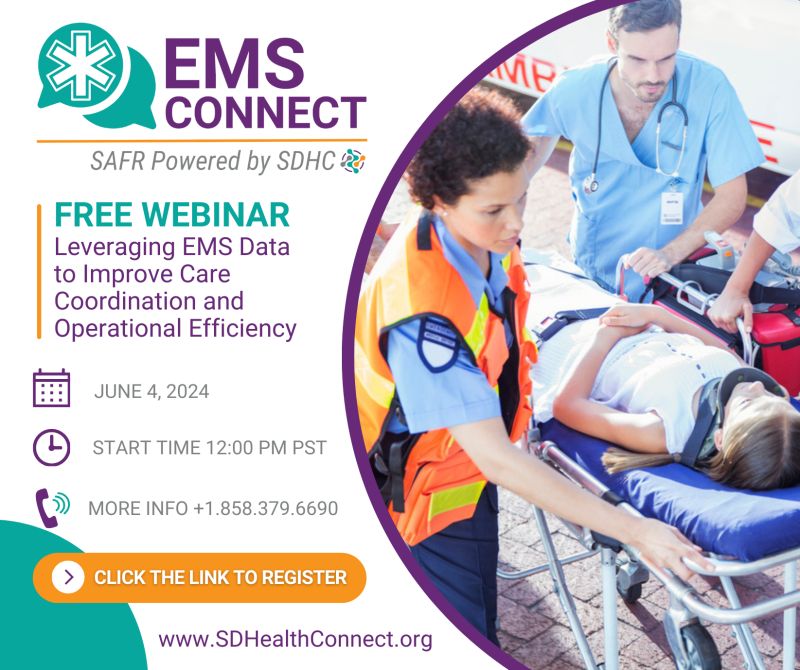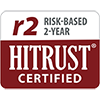
Population Health's Next Frontier
Monica Puga, RN, recalls when value-based care was considered a passing trend. Rebecca Adkins remembers the days of a registered nurse using a spreadsheet to analyze data on a population of patients. Nick Macchione, FACHE, thinks back to his time during the 1990s managing AIDS patients. And, Jessica Diamond, FACHE, remembers when payers began to focus on clinical outcomes.
Today, all of these healthcare leaders hold or have held executive roles in population health management, as many organizations in the past several years have created C-suite and senior-level positions to oversee the transition from fee-for-service to value-based care.
From mindsets about value-based care to the tools, technologies and care teams used, much has changed within population health management since the early days of these executives’ work. Yet, there is much more change on the near horizon as the field continues to evolve in the constant drive to attain a system of care that strives for high quality, while squeezing out unnecessary costs.
Each of the executives above has worked in the population health field for over a decade. The changes they describe and what they forecast present a snapshot of how the work and their roles have evolved and how population health management will continue to transform over the next several years.
Population Health Takes Center Stage
The culture has changed considerably since the days when Puga says she heard phrases like “flavor of the month” in reference to value-based care.
“I also think that value-based care got a bad rap because when people see the word ‘value’ in front of ‘care,’ they think it means cheap care,” says Puga, an ACHE Member. Puga began in population health management about 10 years ago helping build the IT infrastructure for population health data analytics in the EHR for Memorial Healthcare System, a six-hospital system in Hollywood, Fla. Back then, “people didn’t really understand the underpinnings of value-based care,” she says.
Currently Memorial Healthcare System’s chief nurse executive, Puga says moving the needle meant changing mindsets through provider education and storytelling about patient success stories with population health management strategies. Now, value-based care also is part of the organization’s strategic imperative.
As with the culture, the work itself—in terms of scope, clinical teams and technology—has also undergone significant transformation in the past decade or so.
“The work has evolved tremendously,” says Rebecca Adkins, RN, senior vice president of Population Health at Philadelphia-based Jefferson Health, a network of 18 hospitals and physician practices, a health plan and Thomas Jefferson University.
In her early population health work at Jefferson Health, a few nurse navigators used spreadsheet analysis to manage patients in the few value-based contracts in the health system’s portfolio at the time. It was an entirely new area of work. “You were building the ship as you were sailing it,” she says. “Now, there are sophisticated software platforms to support value-based care. Everything from the financial modeling to the care coordination.”
The focus of population health work has also expanded. Adkins says when she first started in the field, a high-risk patient was identified as someone with three or more chronic conditions. Now, risk stratification takes into account patient utilization, medication use and socioeconomic factors—data that is tracked by high-functioning population health management tools whose benefits include care efficiencies.
“The technology allows you to risk stratify in a more sophisticated way to support the right resource at the right time,” Adkins says.
When payers began to scrutinize clinical outcomes and set quality goals, Jessica Diamond, who has worked in population health management for federally qualified health centers since 2015, says she began partnering with a CMO to shift provider focus from treating disease to managing and preventing disease. Diamond and her team created patient panels for primary care, and providers were held accountable for clinical outcomes for these populations. Along with setting up new dashboards of population health data, the team also provided training and education to providers on the shift from fee-for-service to pay-for-performance, the precursor to value-based care.
“Now, we’re in a world where we’re talking about taking on full financial risk for a population,” says Diamond, who now serves as executive director of New York-based FQHC Housing Works. “To do that successfully, you have to be equipped to have pretty advanced population health management tools.”
This expansion of risk factors to include the so-called social determinants of health (factors such as access to food, housing and transportation) represents a reframing of what it takes to keep a population healthy. It isn’t just prescribing a steroid medication for an asthma patient, for instance. Traditional medical interventions and preventive measures are now recognized as no longer sufficient by themselves. Integrating behavior health and social services into population health management has become standard.
“We can’t think that just our clinical information alone is going to help us understand risk levels—who’s likely to be a no-show or remain disengaged,” Diamond says.
“We have to really begin taking our social needs data and incorporate that into how we stratify our patients.”
Reaching Beyond the Four Walls
Just as healthcare providers are looking beyond medical conditions to determine a person’s health status, they are also realizing the need to reach beyond their own four walls to truly capture and address the needs of populations within their communities. Consequently, population health efforts are increasingly involving community partnerships, community investments and the community in general.
For example, 30% of patients at Housing Works are HIV positive, and many are unhoused, which complicates or prevents their ability to follow prescribed care, Diamond says. To address the housing issue, Housing Works has invested in 500 single-room housing units across the city.
“It’s those types of drivers that have to be in place to stabilize an individual,” she says.
Last August, Memorial Healthcare System created a social determinant of health hub, which, with help from community partners such as food banks, faith-based organizations and financial aid providers, ensures that patients get the resources they need outside of medical care. As of May, the hub has served more than 1,000 patients, each being referred for an average of three socioeconomic needs, Puga says.
Jefferson Health partners with various community-based organizations to provide services to address population health needs. “We are working with community partners every single day to reach those populations to provide services that we ourselves are not able to provide,” Adkins says. “They really are that trusted resource.”
Nick Macchione, chief health officer for UC San Diego Health, La Jolla, Calif., says his three decades of work in public health, from the East Coast to the West, made him realize the importance of integration of providers of all kinds—medical, behavioral, social services, law enforcement—in keeping populations healthy and safe.
His experience and insights into population health management led Macchione to be part of creating a strategy incorporating three arenas—health, safety and the built environment. Called Live Well San Diego, the program, begun in 2010, counts 560 hospitals, federally qualified health centers, municipalities, schools, faith-based organizations, private businesses and a variety of other organizations as partners in creating safe corridors and a healthy environment for San Diego County’s 3.3 million residents. The partners align their efforts offering resources to residents; they do not work under a contract, but what Macchione calls a “public handshake.”
“We’re moving from a collaborative nature to a more integrative nature of how to do your work,” Macchione says. “The key is looking outside your walls, thinking broadly of that ecosystem, and when you do, that’s when you move beyond that collaborative to integrative, and even become a generative ecosystem, that provides healthier dividends—care, quality and access—to the patient and generally for the population.”
Today, as chief health officer, the only role of its kind in the university’s system, Macchione sees himself as having one leg in the hospital and one leg in the community.
“It’s been pretty extraordinary,” he says of the role he’s served in for slightly less than a year. “The community is coming to me for advice with how to handle population health challenges. It’s about creating the bridge that is connecting the two worlds.”
What Lies Ahead
Key themes for what’s next in population health management revolve around what can propel the work forward or perhaps stymie its progress: technology, further integration and reimbursement.
New tools, for everything from stratifying patient risk and predicting ED visits to patient engagement and outreach, are upping the level of input and output for population health management.
UC San Diego Health created a community information exchange, which is similar to a health information exchange except that instead of clinical data, the CIE collects data from human services providers such as food banks, shelters and other social services agencies. Such combined data allows population health teams to attain a clearer picture of a patient’s needs and who is meeting those needs, reducing waste and ineffectiveness in the care delivery system and instead providing whole patient care through an integrated network of providers and agencies, Macchione says.
“That HIE and CIE connectivity is the digital backbone for population health,” he says.
Perhaps not surprisingly, the most significant transformation in population health management may come with greater use of artificial intelligence, especially for customizing patient care.
With $25 million in private funding, UC San Diego Health is setting up a Center for Health Innovation, which will serve as an AI-supported “air traffic” command center for population health management, Macchione says. Using data from the HIEs and CIEs, the AI tool is expected to be able to perform such functions as identifying gaps in patient care that have the potential to lead to negative outcomes and then suggest preventive measures.
For example, for an asthmatic patient who is about to be discharged, the AI tool will be able to determine whether the patient is likely to have any obstacles for managing symptoms in the home environment, such as a lack of air-conditioning—an important piece of data because hot weather can negatively impact air quality and aggravate asthma. The hope is that AI will also develop a solution for that patient—all before discharge, Macchione says.
“That’s going to bring population health to the high next level,” he says.
Housing Works’ Diamond also views AI as a game changer, but she says the health center is proceeding with caution for fear of exacerbating health disparities. Closing the disparity gap is crucial to a population health strategy, but using AI or machine learning has to be built and staff trained so it reflects the populations being served.
“If not, then they’re going to be flawed from the start, and they won’t help us adjust the health disparities that we know exist,” Diamond says. “It’s critical in population health management and to me from a mission and corporate perspective that we really ensure any insight that we get from technology is not further perpetuating the disparities.”
Memorial Healthcare System’s Puga sees greater collaboration across the continuum of care, from acute care hospitals and ambulatory care to behavioral health care, skilled nursing care, home care and community care such as food banks and housing shelters. “We can no longer work in organizational silos,” she says. “We have to effect change across the care continuum and make healthcare more frictionless, more seamless.”
Puga also believes that the business models will have to change to support work in social determinants of health. Accreditation agencies, such as The Joint Commission, are already requiring assessments for socioeconomic factors. “I expect to see a major shift,” in the business model, she says.
Richard Ashenoff, Memorial Healthcare System’s vice president of value-based care, sees more risk-based contracts to support value-based care. He says there needs to be better alignment of incentives, specifically for physicians. Ashenoff says he is trying to educate employers on pushing their health plan carriers to offer such deals by incentivizing physicians in their networks to agree to value-based care contracts. He believes the Centers for Medicare & Medicaid Services is headed in this direction.
“The commercial payers will follow suit shortly thereafter. It’s definitely on everyone’s radar,” Ashenoff says. “So, it’s really incumbent on us to align incentives, reward the behaviors we want and incentivize providers for doing the right thing.”
Diamond agrees that matching reimbursement and rates to population health services will loom larger over the next few years. She points to the accelerated use of telemedicine during the COVID-19 pandemic, when she says telehealth visits at Housing Works skyrocketed from 3% of patient visits to about 98%. Now, her advocacy team has been working with legislators to lobby for appropriate reimbursement and developing an advocacy plan in conjunction with other community health centers.
“This type of transformation would have normally taken 10 years, but it took really weeks, if not days. Now we’re trying to figure out the right balance of in-person and virtual care,” she says. “So, there’s a lot of advocacy that needs to be done to … take lessons learned from the pandemic and ensure we’re reimbursed accordingly,” she says.
Population health has come a long way since its infancy, but as with any other endeavor in healthcare, it’s still about finding the right support—both financially and strategically.
“Managing value-based contracts,” Diamond says, “is how to find the right community-based partners and also risk-bearing entity partners that can provide the best financial support and insights to allow them to be successful in managing the population and benefit accordingly.”









